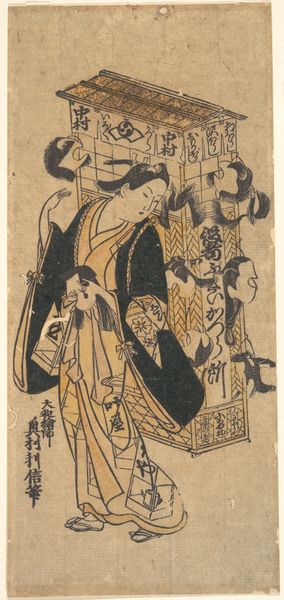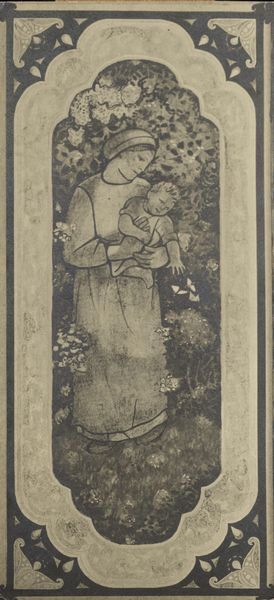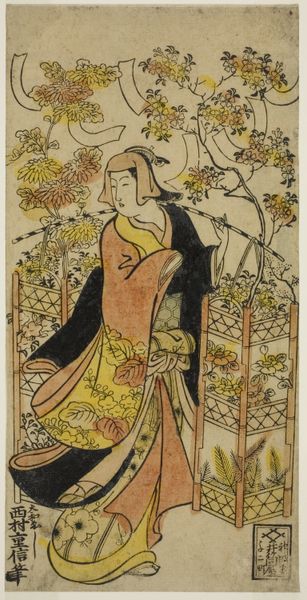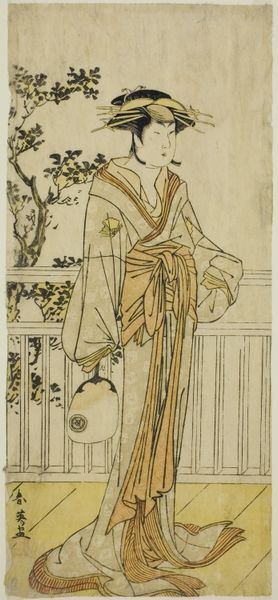
Two Girls under an Umbrella c. 1788 - 1789
0:00
0:00
print, woodblock-print
#
portrait
# print
#
asian-art
#
ukiyo-e
#
woodblock-print
Dimensions: 26 × 5 3/16 in.
Copyright: Public Domain
Editor: This is "Two Girls under an Umbrella," a woodblock print by Chobunsai Eishi, from around 1788 or 1789. It feels very intimate, almost like we're intruding on a private moment. What do you see in this piece? Curator: Immediately, I consider the social context. These prints, Ukiyo-e, were mass-produced, reaching a wider audience than traditional paintings. Look closely at the paper, the woodblock – they aren't just supporting elements, but define the art form itself, born from a specific economic and material reality. The patterns on the kimono, likely achieved through meticulous carving, denote social status and are themselves products of labor and commerce. Editor: So you're saying the materials used and how it was made are as important as what’s depicted? Curator: Precisely! Ukiyo-e was very much tied to consumer culture. These weren’t just aesthetic objects, they were commodities. Now, consider the colors, or lack thereof, and how the woodblock influences texture and form. What does this tell us about the intended consumer? Editor: Maybe affordability was a factor? Making it more accessible? Curator: That's plausible. These prints allowed access to images of idealized beauty. It wasn't just about displaying wealth, but consuming an idea of it. The umbrella itself— who would have access to this luxury? It speaks volumes about social strata. What do you think, considering its display location in the Art Institute today? Editor: It definitely shifts the meaning to a high art context, almost erasing the print's original accessibility through mass production. I hadn't considered that tension. Curator: Indeed! We have shifted it into a new cycle of material consumption and interpretation, and understanding that context is crucial.
Comments
No comments
Be the first to comment and join the conversation on the ultimate creative platform.













